Facts and figurines: Is there more to Disney Infinity than a Skylanders clone?
(Yes.)
Catch a glimpse of Disney Infinity in passing and you'd probably conclude that it's a shameless rip-off of Skylanders. Investigate a little, however, and it all gets a touch stranger. In truth, it's probably safer to describe Disney Infinity as a shameless rip-off of Skylanders and LittleBigPlanet and Minecraft, and maybe some of the Lego games. It's a synthesis - or perhaps a mutant. It could be massive.
Skylanders first. Disney Infinity sees you accessing characters and environments by standing a series of chunky toys in slots on the Infinity Base - the equivalent of Skylander's Portal of Power. Collectable figures unlock the Disney characters they represent, squat little lumps of plastic called Play Set Pieces unlock the, um, play sets - or themed mission packs - that the characters can then explore, and Power Discs throw in new perks like extra health, or spawn virtual toys and texture sets.
Like Skylanders, the toys themselves have a lovely tactile appeal to them. Designed in-house and then built by the same company that knocks out Vinylmation and Play Arts figurines, they have a great weight, excellent build quality, and they see classic Disney folk redesigned with certain visual elements in common: broader shoulders, bigger hands, and a general chunkier vibe.
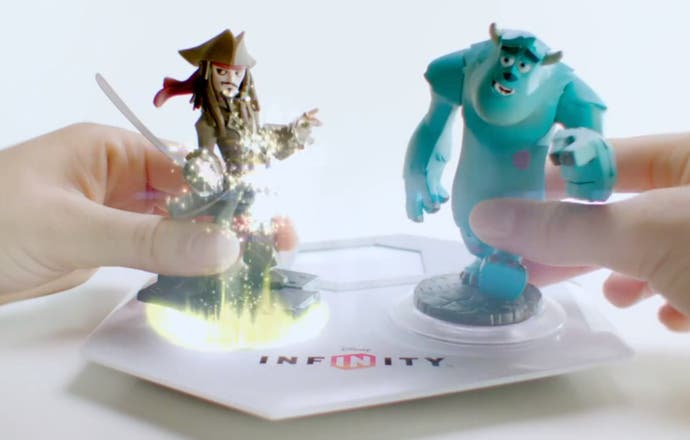
The play sets, meanwhile, provide each Disney franchise with its own open-world sandbox game, riddled with missions and loot to unlock, and covering everything from vehicles and races to 3D platforming in its hectic sweep. Every one should provide around five to six hours of gameplay on its own as you work through the story, and they all promise to have their bespoke idiosyncratic tilts. The Incredibles, for example, get a breezy futuristic city to roam about in with a narrative that leads them from the dockside, which is under attack from Syndrome and his Omnidroids, and out around town for a brisk crime-fighting spree.
The focus here is on melee combat, and each character you switch in and out of the game - as with Skylanders, this is done by replacing the figure on the Infinity Base - comes with their own skills. Mr Incredible's really strong, for example, and can lift stuff up and throw it around, making the most of the engine's environmental damage effects. Mrs Incredible can use stretch attacks for crowd control and scaling up buildings, and Violet can summon force fields and turn herself invisible, which I suspect is a metaphor for low self-esteem. Poor Violet! Anyways, it should be fun with just a single player involved, but it's clearly built around co-op, which allows for two local pals or up to four online.
Monsters Inc. fans meanwhile - and it is the best Pixar film by a country mile - get a play set based on Monsters University, and this one's heavy on platforming and sneaking as you fight a war of family-friendly mischief against rival college Fear Tech. Alongside letting you scamper around the outsides of buildings as you remove nasty banners your foes have installed, the campaign here also seems to provide a gentle introduction to the game's deeper creative ambitions, since the Monsters are prone to laying traps rather than fighting it out in direct combat.
You can spend an early mission summoning a range of 'prank' devices to install at specific spots in a level, for example - things like call boxes which produce fly swats that knock characters around the map, or manhole covers that spring them into the air. Given time - and a little ingenuity - you can turn each environment into a kind of platformy pinball table, bouncing people back and forth in endless bursts of slapstick violence. It's genuinely wonderful to watch.
The play sets look terrific, with bright primary colours, large open spaces, and nice chunky geometry, and there's real freedom to be had as you plough through the missions and then cash in winnings at the toy kiosk, unlocking vehicles to race, perhaps, or - in the case of Monsters Inc - getting your hands on a gun that shoots toilet roll. The controls, however, at least in this early alpha version, are rather cumbersome. Platforming, I'm told before a brief hands on, is pretty buggy in the latest build, so complex stuff like inching around corners can be difficult, but general movement flits between feeling a little too sluggish and a little too floaty as well.
Beyond that, the whole Infinity play sets project, which seems to span almost every aspect of Disney's back catalogue and features input from people like John Lasseter and Tim Burton, offers an interesting glimpse of a famously protective company's city state mentality. Each of these sets is reserved only for the specific characters whose worlds they draw upon. There will be no pirates milling around the plazas of Monster University, no superheroes on the deck of the Black Pearl.
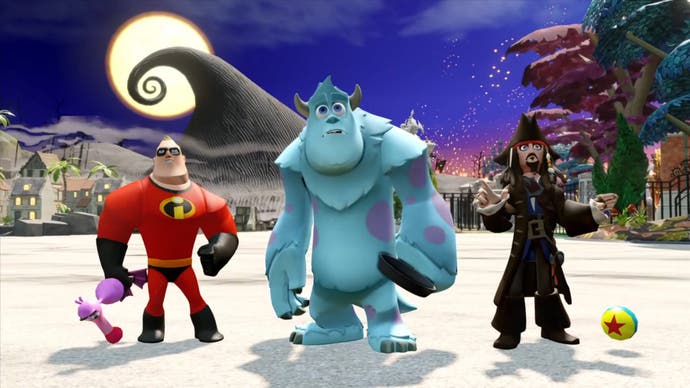
All of which makes the inclusion of the separate toy box content more astonishing. Remember that this initially looked like a clone of Skylanders? Here's where LittleBigPlanet and all those other influences come in. Toy box mode allows you to bring together all of the game's characters that you own the figurines for - along with all the items and skills you've unlocked in the separate play sets - in an environment where you can build your own worlds and then screw around in them to your heart's content. Pirates and princesses! Superheroes and monsters! It's a bit like the toy box stuff from Toy Story 3, but it's been massively expanded, and feels like a chance to really tinker and meddle with the varied elements of Disney's universe. The team like to describe the toy box content as being "like your parents' living room floor" - an evocative turn-of-phrase, and possibly an accurate one, too. Hopefully dad finally got the parquet fixed.
The toy box environment that Disney's currently showing off is knocked together from a few huge pieces of land done up with skyscrapers and a loopy racetrack. Set against a bright blue sky, it turns out to be surprisingly modular. You can select the individual skyscrapers, move them around, rotate them, and even set them floating in the air. You can add and replace things, chucking in Scrooge McDuck's Money Bin, perhaps, or the Epcot Centre. You can slot new ground in with big environment tiles, and add fresh kinks and loops to the racetrack or even remove the whole thing completely.
Editing is all done without leaving the game world or switching to another mode: you simply equip your character with a magic wand that lets them highlight and manipulate things, and you can load in new texture packs and skydomes by stacking power disks onto the Infinity Base alongside your figurines. The entire process feels pretty effortless - a sure sign that somebody's spent an awful lot of effort on it - and, like the rest of the game, it's available in co-op play, both locally and online. You'll be able to visit friends' worlds, too, and Disney plans on setting up a series of design contests where user-generated entries are vetted before the best stuff is then made available to everyone.

It looks like great fun in a no-fuss, blocks-and-bricks way, and it's reminiscent of both Minecraft and LittleBigPlanet - both of which the team openly cites as influences - even if this specific implementation purposefully lacks the deeper complexities of either. That said, the addition of a handful of 'logic toys' means Infinty's more powerful than you might imagine: with doodads that can add victory and fail states or allow you to shift the camera around, the internal team's already remade Gauntlet, Joust, various kart racers and - inevitably - Super Mario Bros 1-1. (If you're wondering about the average age of an Infinity developer, incidentally, the skew of that list should clarify things a little.)
Is there a risk that all of the disparate elements of this massive project - the toys, the platforming, the driving, the combat, the creativity - could mush together to make for a bit of a confusing final game? "I think it comes down to making it accessible," argues executive producer John Vignocchi. "With respect to Skylanders, while we have the collectable figurines and the stand, we're a very different experience. I'm a huge Skylanders fan, but it's a linear experience and we're an open world experience with a whole creation mode.
"With respect to making sure it doesn't feel like a muddle, I think it comes down to execution, vision, and also messaging to the player. One of the things we always find very interesting is how adults always doubt the sophistication of children and how smart kids are. When you look at games like Minecraft and the things people build within those games they're incredibly sophisticated. We've been doing consumer testing on Infinity for eight or nine months and that's constantly shaping and evolving the design of the game. We want to be able to communicate everything to the gamer, but still to have this breadth and depth available. Some of the games that allow you to do logic editing are very difficult to understand and take a really long time and turn people off. We wanted to make something that is simple enough so that a guy like me who doesn't normally do that kind of editing inside a game could still have fun, and then could continue exploring down that path and learning more and more about how the game works."
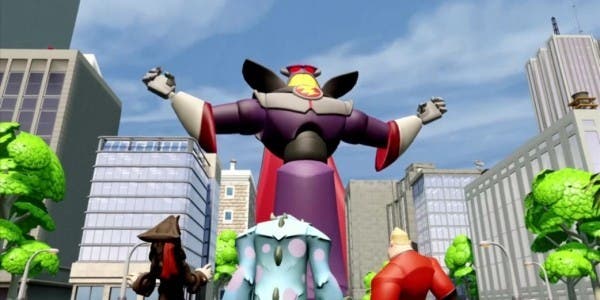
In a way, for all its borrowings - because of all its borrowings - Infinity is shaping up to be a classically Disneyesque project. Disney didn't invent cartoons, just like it didn't invent theme parks: instead, the company poured in money and layered on the polish, adding synchronised audio and an understanding of real material physics to its films, say, and perfecting everything from the art of queuing for rides to the control of sightlines for its attractions. It's a world leader in terms of investment and implementation more frequently than pure innovation, and Infinity's built with a balance of ambition and conservatism that Walt himself would probably recognise. This is one of the biggest cross-company projects the outfit's ever taken on, apparently, and it will ship on consoles and PC with cloud-saving and cross-platform content supported wherever the platform holders will let them, for example, yet its various pieces have already been proven to work in isolation elsewhere: interactive toys, sandboxy questing, UGC and sharing stuff.
If it comes together, it could mean the days of bespoke Disney tie-ins are all but gone, with most of the company's future games channeled through that Infinity Base with its glowing pedestals waiting for those pleasantly rugged figurines. This isn't a game, in other words, it's a platform - a vast digital living room floor where kids can scatter their toys as they wish.


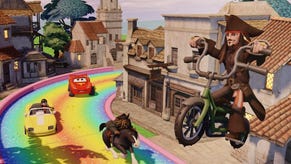
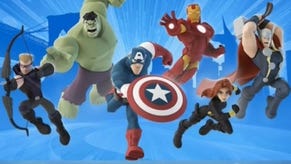


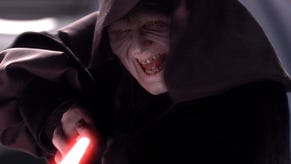
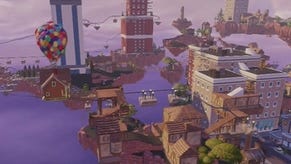
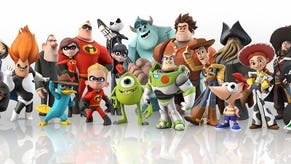
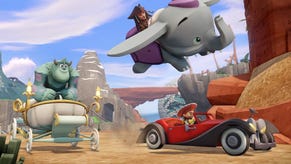



.png?width=291&height=164&fit=crop&quality=80&format=jpg&auto=webp)



